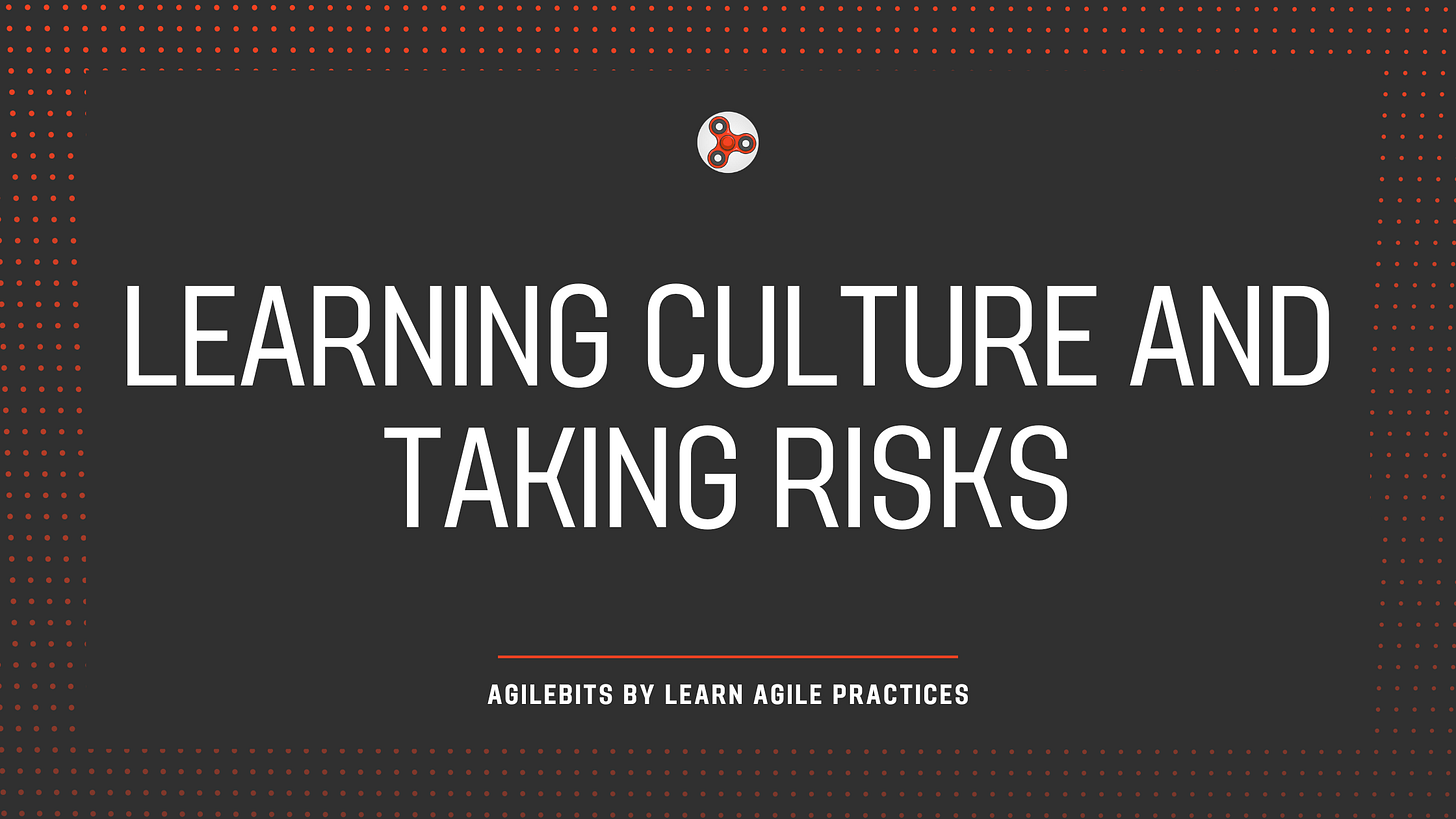Learning Culture and Taking Risks
Many organizations claim to value learning, but in reality, they create environments where employees feel pressured to have the right answers and avoid mistakes. How to fix that?
Hello, developers! 🚀
Welcome back to the Learn Agile Practices newsletter, your weekly dose of insights to power up your software development journey through Agile Technical Practices and Methodologies!5t
Before starting, I quickly remind you that my brand new Test-Driven Development 101 5-day Email Course is available: it is the introduction to TDD I wish I had when I started learning it, so I think you will find it very useful!
As a subscriber to my newsletter, you can have it with a 10EUR discount! 👇
Now, let's dive into today's micro-topic!
In short
🧠 Many organizations claim to value learning, but in reality, they create environments where employees feel pressured to have the right answers and avoid mistakes.
🔥 True learning happens through mistakes and rapid recovery. Every major breakthrough is built on trial and error, yet many workplaces treat failure as incompetence rather than progress.
🚀 A culture of learning isn't about reckless risk-taking—it’s about creating the right conditions for safe experimentation.
Feeling safe to look stupid
Most teams proudly claim they value learning. They champion innovation, encourage continuous improvement, and praise the idea of a growth mindset. But when you dig deeper, you’ll often find that the reality is quite different. Many organizations unknowingly create an environment where employees feel pressured to always have the right answer, avoid mistakes, and never ask questions that might expose gaps in their knowledge. In reality, few organizations are actually able tyo create a space where people feel safe looking stupid.
The result? People play it safe. They stick to what they know, avoid experimenting with new ideas, and hesitate to challenge assumptions—even when those assumptions might be flawed. Learning becomes performative rather than real.
But real learning isn’t about avoiding mistakes—it’s about making them, recovering fast, and growing from them. Every breakthrough, every major discovery, and every leap forward in software, business, and science has been built on a foundation of trial and error. Yet, many workplaces discourage this process by fostering a culture where asking the “wrong” question, proposing an unconventional idea, or making an honest mistake feels like failure rather than progress.
This is a big problem, because real learning isn’t about avoiding mistakes—it’s about making them, recovering fast, and growing from them. Yet, many workplaces discourage this by fostering a culture where asking the “wrong” question or making a mistake feels like failure.
Companies should let’s flip that perspective!
What if failure wasn’t just tolerated but just considered as unavoidable, and an essential part of progress? What if making mistakes wasn’t seen as incompetence, but rather as a sign of pushing boundaries and striving for better solutions? What if teams actively encouraged risk-taking, experimentation, and curiosity—without the fear of judgment?
That kind of environment isn’t just idealistic; it’s the hallmark of truly high-performing teams.
A Safe Space for Learning
High-performing teams don’t just accept that mistakes will happen. They learn from them. They also create structures that make risk-taking productive. Here’s what that looks like in action:
🔹 Failure is treated as learning – The best developers, engineers, and leaders all have one thing in common: a long list of mistakes. Every successful system was built on top of many small (and sometimes big) failures. Mistakes aren’t setbacks; they’re data points.
🔹 Questions are actively encouraged – The simplest questions often lead to the biggest insights. When someone asks, “Why do we do it this way?” or “What if we tried something different?” they’re challenging assumptions that might be holding the team back.
🔹 Psychological safety is a priority – If people are afraid of looking foolish, they won’t take risks. And without risk, there’s no innovation. The best teams create an environment where no one is punished for trying, failing, and iterating.
🔹 Great engineers and product leaders don’t pretend to know everything—they actively seek out what they don’t understand. They ask obvious questions, push for clarity, and run small, controlled experiments.
From Fear to Growth
A culture of learning isn’t about reckless risk-taking; it’s about having the right guardrails to allow for safe experimentation. When teams get this right, they move faster, build better products, and stay ahead of the competition.
Team members should be encouraged to:
Ask the "stupid "(?) question no one else is asking.
Try something new that might fail—but do it in a way that limits the blast radius.
Encourage your team to embrace failure as data, not defeat.
What feels like a dumb question or a small failure today might be the key to success tomorrow. 🚀
Until next time—happy coding! 🤓👩💻👨💻


